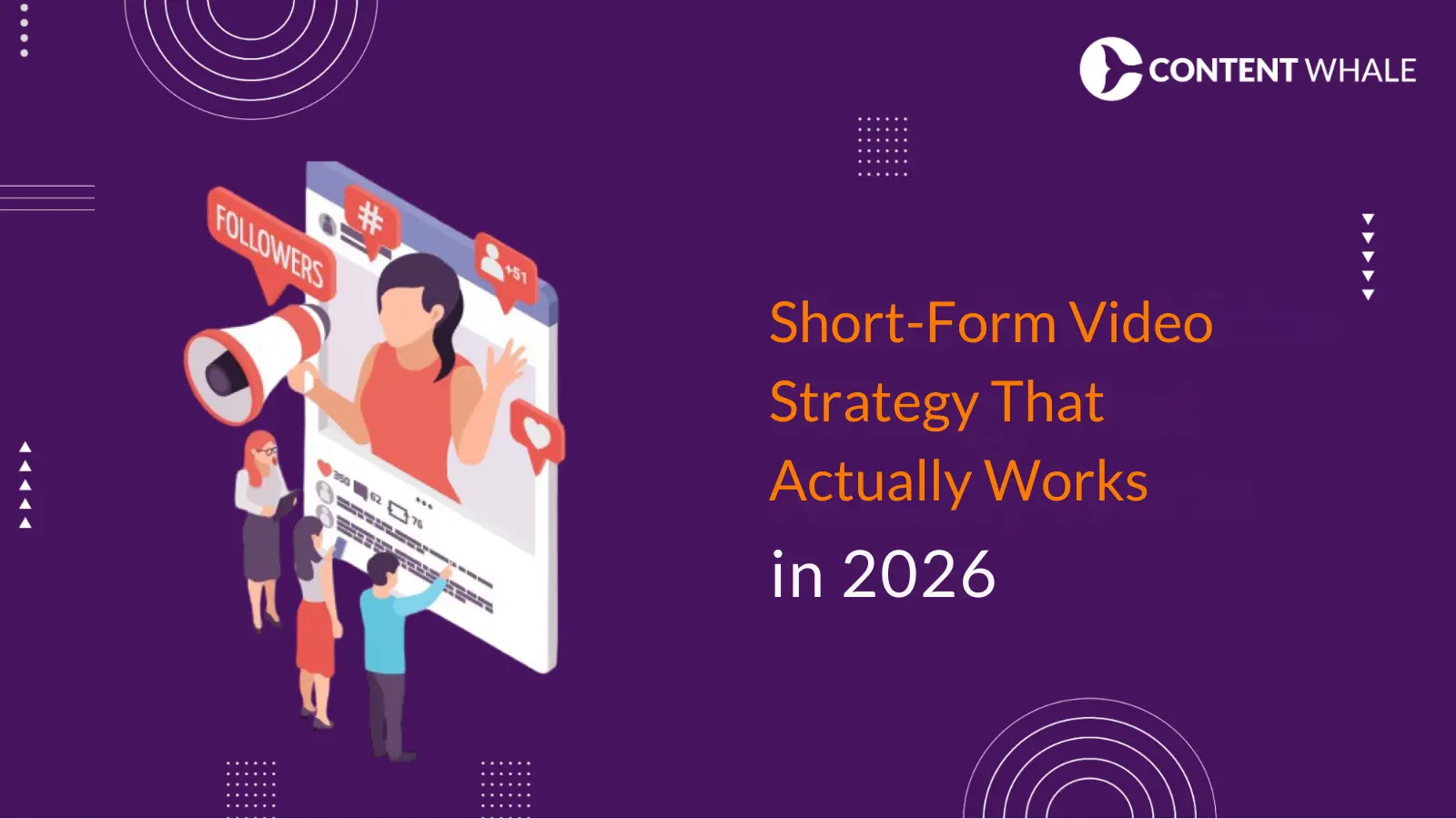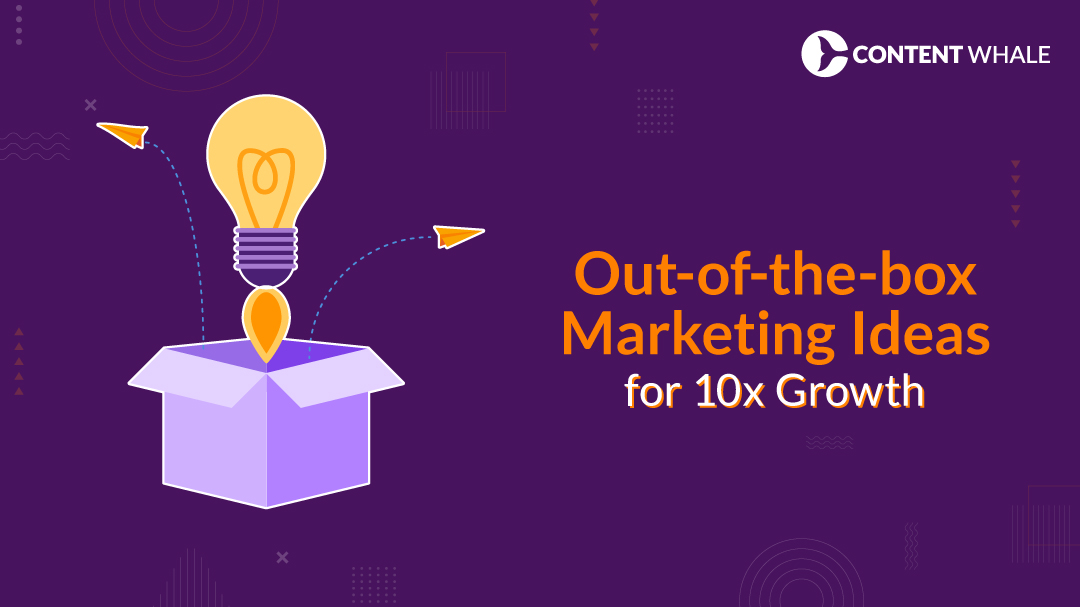Conversion-focused content marketing revolves around creating content that is not just informative but strategically designed to lead readers toward a specific action, whether it’s making a purchase, signing up for a service, or downloading a resource. The core goal is to drive tangible business results by aligning your content with well-defined conversion-focused content marketing strategies.
In 2026, the need for conversion content marketing is more critical than ever. As competition increases and user attention spans decrease, businesses must focus on content that resonates deeply with their target audience, guiding them through each stage of the customer journey.
This blog will cover practical strategies such as content personalization, optimizing landing pages, and lead nurturing techniques to improve conversion rates. Additionally, we’ll explore the role of KPIs and tools to measure success effectively, ensuring your content drives results consistently.
1. The Role of Conversion in Content Marketing
A) Why Conversions Matter
Conversions are what turn website visitors into leads or paying customers. These actions, such as signing up for a newsletter or purchasing a product, are the ultimate goal of your content marketing efforts. Simply generating traffic isn’t enough—conversion-focused content drives real business results.
B) Traffic vs. Conversion-Focused Content
- Traffic Content: Designed to attract users through blogs, social media, etc.
- Conversion Content: Focuses on turning that traffic into leads or sales through clear CTAs, lead nurturing, and targeted offers.
C) Key Metrics to Track
- Conversion rate: How many visitors take the desired action.
- ROI: The return on investment from your marketing efforts.
2. Understanding the Sales Funnel and Customer Journey
A) Sales Funnel Stages
The sales funnel is a roadmap that guides your audience from awareness to action. Here’s a breakdown of each stage:
- Awareness: This is the top of the funnel, where potential customers first learn about your brand. Content here should educate and inform, such as blog posts, videos, or social media content.
- Consideration: In the middle of the funnel, prospects are evaluating their options. Content like case studies, comparison guides, and product demos can help in their decision-making process.
- Decision: At the bottom of the funnel, customers are ready to take action. This is where conversion optimization comes into play through landing pages, product offers, and strong CTAs.
B) Mapping Content to Each Stage
Aligning content with each stage of the customer journey ensures you’re delivering the right message at the right time. For example:
- Blog posts are ideal for the awareness stage.
- Case studies and product comparisons fit well during consideration.
- Landing pages and direct offers help convert leads in the decision stage.
3. Top Conversion-Focused Content Marketing Strategies

A) Content Personalization
Tailor your content to your audience’s behavior and preferences. Personalized emails or product recommendations based on browsing history can significantly improve engagement and lead generation.
B) Optimizing Landing Pages
Your landing page is often the first point of conversion. To boost performance:
- Focus on a clear, compelling headline.
- Include trust signals like reviews or testimonials.
- Simplify your forms to reduce friction in the conversion process.
C) Strong CTAs
A strong call-to-action (CTA) can make or break a conversion. Keep your CTA clear, actionable, and placed prominently on the page. Phrases like “Download Now” or “Get Started Today” encourage immediate action.
D) Lead Magnets
Offer value in exchange for user information. Lead magnets like eBooks, guides, and checklists work well for capturing emails and nurturing potential leads through content marketing funnels.
E) Nurturing Leads with Email Marketing
Email marketing is still one of the most effective ways to nurture leads. Automated email sequences can keep your brand top of mind and push leads toward conversion by providing consistent value.
| # | Strategy | Description |
| 1 | Content Personalization | Tailor content to user preferences for higher relevance and engagement. |
| 2 | Optimizing Landing Pages | Clear headlines, trust signals, and simple forms improve user experience and conversions. |
| 3 | Strong CTAs | Direct and actionable CTAs encourage immediate responses. |
| 4 | Lead Magnets | Offer value (eBooks, guides) in exchange for user information to capture leads. |
| 5 | Email Marketing | Nurture leads with automated and personalized email sequences for better conversions. |
| 6 | A/B Testing | Test different content elements to determine what improves conversion rates. |
| 7 | Video Marketing | Videos boost engagement and trust, leading to more conversions. |
| 8 | SEO Optimization | Optimize for search engines to drive organic traffic and improve conversions. |
| 9 | Retargeting | Reach users who didn’t convert through ads or follow-up emails. |
| 10 | Social Media Engagement | Use social media to engage users and drive conversions through interaction and content sharing. |
4. Lead Nurturing and Content Conversion Tactics
A) Automated Email Sequences
Setting up automated email sequences is a powerful way to keep your leads engaged without constant manual effort. These emails should be triggered based on user behavior, such as signing up for a newsletter or downloading a lead magnet. For example:
- After a user downloads an eBook, they receive a follow-up email offering related blog posts or product information.
- Abandoned cart emails can remind users of what they left behind, offering discounts or incentives to encourage conversion.
B) Targeted Campaigns Based on Behavior
Segmenting your audience based on behavior—such as what pages they visited or how long they spent on your site—allows you to tailor your email campaigns more effectively. For example:
- Users who repeatedly visit your pricing page might receive a limited-time offer or a comparison guide to help them decide.
- Visitors who spent time reading blog posts on specific topics can be targeted with content or offers that address those interests.
C) Retargeting and Remarketing Content
Using retargeting ads or email remarketing strategies ensures that your brand stays in front of potential customers even after they leave your site.
Remarketing content that addresses their pain points or interests can gently nudge them back to your site and closer to a conversion.
5. Measuring Success: KPIs and Analytics for Content Conversion
Tracking the right KPIs is essential for optimizing your content marketing efforts. Here are some key metrics to focus on:
A) Conversion Rate
The most important metric for any conversion-focused content strategy. It shows how many visitors are taking the desired action, whether it’s filling out a form, subscribing, or making a purchase.
B) Bounce Rate
This metric tells you how quickly visitors are leaving your site after arriving. A high bounce rate can indicate issues with the page’s content, user experience, or even page load times.
C) Time on Page
The more time users spend on a page, the more likely they are to convert. This metric is a good indicator of content engagement.
D) CTA Click-Through Rate
How effective are your CTAs? This metric shows how many visitors are clicking your call-to-action buttons, helping you identify which CTAs resonate best with your audience.
E) Tools for Tracking
Use tools like Google Analytics, HubSpot, or Kissmetrics to gather data on your KPIs and track content performance. A/B testing can help you refine your strategy for even better results.
6. Best Tools to Drive Conversion-Focused Content

To implement effective conversion-focused content marketing strategies, using the right tools is essential. Here are some key tools to consider:
| # | Tools | Key Features | Overall Rating |
| 1 | Google Analytics | Free, comprehensive analytics, real-time data, audience insights, event tracking | ⭐⭐⭐⭐⭐ (5.0) |
| 2 | Optimizely | A/B testing, multivariate testing, visual editor, advanced targeting and segmentation | ⭐⭐⭐⭐⭐ (4.8) |
| 3 | Crazy Egg | Heatmaps, scroll maps, A/B testing, session recordings, user-friendly interface | ⭐⭐⭐⭐ (4.5) |
| 4 | Hotjar | Heatmaps, user session recordings, polls and surveys, feedback collection | ⭐⭐⭐⭐ (4.6) |
| 5 | Unbounce | Drag-and-drop landing page builder, A/B testing, customizable templates, smart builder | ⭐⭐⭐⭐ (4.4) |
| 6 | VWO | Multivariate testing, personalization, insights and analytics, A/B testing | ⭐⭐⭐⭐⭐ (4.7) |
| 7 | Leadpages | Conversion-focused templates, drag-and-drop builder, exit-intent popups, A/B testing | ⭐⭐⭐⭐ (4.3) |
| 8 | Kissmetrics | Funnel analysis, cohort analysis, customer behavior tracking, strong reporting capabilities | ⭐⭐⭐⭐ (4.4) |
A) HubSpot
HubSpot is a powerful CRM platform that helps streamline lead nurturing through automation. It allows you to create automated email workflows, track user behavior, and measure conversion performance—all in one place.
B) Google Optimize
This tool is invaluable for A/B testing your landing pages and other content elements. By running experiments, you can identify which variations perform better, helping you optimize for higher conversions.
C) Canva
Visual content is key to engaging users, and Canva allows you to create stunning, branded visuals without needing a professional designer. Use it to design eye-catching graphics for landing pages, blog posts, and social media, improving user engagement and conversions.
D) Hotjar
Hotjar provides heatmaps and visitor recordings to show exactly how users are interacting with your website. This data helps identify pain points in the user journey, enabling you to improve conversion optimization.
E) ActiveCampaign
This is a great tool for email marketing and automation, allowing you to create targeted email campaigns that nurture leads and push them toward conversion.
Conclusion

Conversion-focused content marketing is essential for businesses aiming to turn visitors into leads and leads into customers. By employing strategies like content personalization, optimizing landing pages, and integrating strong CTAs, you can significantly boost your conversion rates. Each element of your content must be aligned with the sales funnel, ensuring that potential customers are nurtured through the entire journey, from awareness to decision-making.
Continuous optimization is key to staying competitive in 2026. Regularly analyzing your KPIs and using tools like HubSpot and Google Optimize can help refine your strategy, ensuring it remains effective over time. By implementing these strategies and consistently measuring your results, you can improve both engagement and ROI, making your content marketing efforts more impactful and conversion-driven.
At Content Whale, we specialize in crafting conversion-focused content marketing strategies customized to your business needs. Our expertise lies in creating engaging, personalized content that drives leads, improves ROI, and enhances customer journeys. Whether it’s optimizing landing pages, creating strong CTAs, or nurturing leads, we’ve got you covered.
Let us help you turn your content into a conversion machine and achieve measurable business growth in 2026!
FAQs
1. What is conversion-focused content marketing?
Conversion-focused content marketing is a strategy that aims to guide your audience toward specific actions, like making a purchase, signing up for a service, or downloading a resource. It integrates techniques such as content personalization, landing page optimization, and strong CTAs to turn visitors into leads or customers.
2. How can I track the effectiveness of my content in driving conversions?
Tracking KPIs such as conversion rate, bounce rate, and CTA click-through rate helps measure how well your content is performing. Tools like Google Analytics and HubSpot can provide detailed insights into user behavior and conversion metrics.
3. What role does email marketing play in lead conversion?
Email marketing is crucial for nurturing leads. Automated email sequences based on user behavior, like follow-ups or product recommendations, can guide leads through the sales funnel and push them toward making a purchase.
4. How can I improve the conversion rate on my landing pages?
To improve conversion rates, focus on a clear headline, trust signals (like testimonials), simplified forms, and strong CTAs. Tools like Google Optimize can help you A/B test different page elements to find what works best.
5. What are the best tools for conversion-focused content marketing?
Key tools include HubSpot for CRM and automation, Google Optimize for A/B testing, and Canva for creating visually compelling content that engages and converts.





